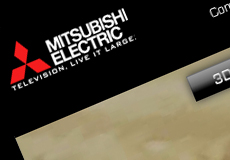The SOPA Piracy Debate Rages On: Looking at Both Sides
December 16, 2011
- PaidContent has published a compelling analysis of the controversy that has recently arisen over the Stop Online Piracy Act.
- “The issue isn’t that complicated,” suggests the article. “At its core, it’s about deciding the role of different industries in monitoring and enforcing intellectual property rights. Unfortunately, the debate so far has been all about hysterics and hyperbole. SOPA supporters are casting opponents as free-loading, unpatriotic criminals. Meanwhile, the bill’s detractors say that brand owners want to bring about Chinese-style censorship and the ‘end of the Internet.'”
- ETCentric staffer Phil Lelyveld points out that the article provides a rational assessment of both sides of the SOPA discussion and offers additional context to the Wikipedia blackout story we reported earlier this week.
- “The problem with this rhetoric is not just that it’s inaccurate but that, after a point, it’s boring,” suggests paidContent. “The SOPA screaming attracts partisans but few people who want to discuss a balanced approach to the piracy problem.”
- The article calls for “a shift not just in substance but in tone” that would lead to a rational public discussion on intellectual property enforcement.
- ETCentric‘s Dennis Kuba submitted a related CNN opinion piece written by leaders of Global Voices Online, an international citizen media network. As an example of the passion emerging from this subject, the editorial concludes: “Passage of the Stop Online Piracy Act or Protect IP will send a loud signal to governments everywhere that it is fine to monitor and censor citizens’ online behavior to catch and prevent ‘infringing activity,’ which too often means political and religious dissent. The result will be a world even more dangerous and difficult for bloggers and activists than it already is.”


